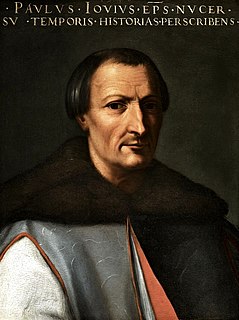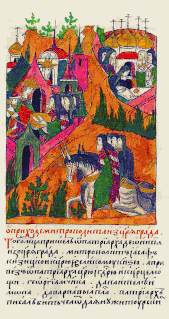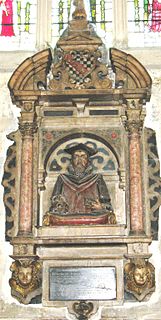Works
Writings
Lily was a major contributor to the Descriptio Britanniae, Scotiae, Hyberniae et Orchadum, a chorography of the British Isles conceived by Paolo Giovio, Bishop of Nocera, which was published in Venice in 1548. As well as supplying information to Giovio for the geographical descriptions, Lily was the author of several self-contained historical appendices: "Virorum aliquot in Britannia qui nostro seculo eruditione & doctrina clari, memorabilesque fuerunt elogia", a collection of short biographies of English humanist scholars (including his own father, William), which was dedicated to Giovio; "Nova et Antiqua Locorum Nomina in Anglia et in Scotia", a table of ancient and modern place and tribal names; "A Bruto ... omnium in quos variante fortuna Britanniae imperium translatum brevis enumeratio", a discussion of the early history of Britain, in which Lily expressed scepticism about the legendary foundation of the realm by Brutus; "Lancastrii et Eboracensis de regno contentiones", an account of the Wars of the Roses; and "Regum Angliae genealogia", a genealogy of the Kings of England.
Lily has also been credited as author of "Catalogus sive Series Pontificorum et Caesarum Romanorum" (a catalogue of Roman Popes and Emperors), a "Life of John Fisher, Bishop of Rochester", and an account of the life of Thomas Cranmer ("De vita, moribus, et fine Thomae Cranmeri"); but the latter two of these attributions, at least, are no longer upheld. [2] [1]
Cartography

Almost certainly intended as a companion-piece to the Descriptio Britanniae, Lily drew the first map of the British Isles (at a reasonably detailed scale) to be printed. [3] [4] [5] It was engraved on two plates and published in Rome in 1546. The map is recognisably a relation of the 14th-century Gough Map, although the orientation has been reversed (West is at the top of the sheet), and many minor improvements have been made. The Scottish coastline, in particular, is considerably more accurate than that on the Gough Map, but Lily's sources for this are not known. The map was pirated on several occasions in Italy; and Lily and Pole appear to have carried the plates back to England with them, as they were reworked by the engraver Thomas Geminus for a London edition published in 1555.
It has also been suggested that Lily had a hand in the large-scale "Copperplate Map" of London, printed in about 1559. [6]







